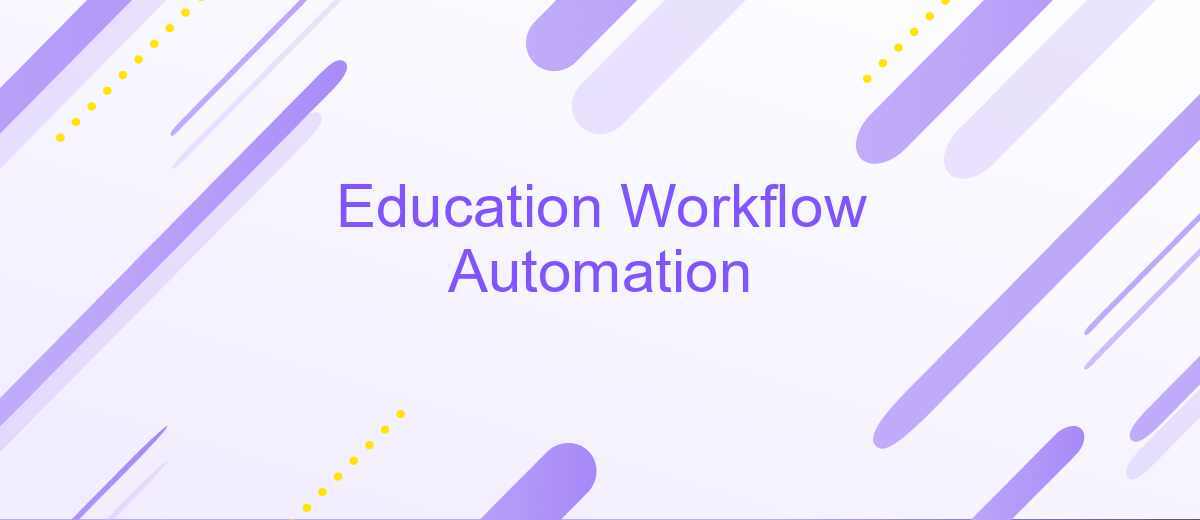Education Workflow Automation
In today's fast-paced educational environment, efficiency and productivity are paramount. Education workflow automation streamlines administrative tasks, enhances communication, and optimizes resource management, allowing educators to focus more on teaching and less on paperwork. This article explores the benefits, implementation strategies, and real-world applications of automation in education, illustrating how technology can transform traditional workflows and improve overall educational outcomes.
Executive Summary
In today's rapidly evolving educational landscape, the need for efficient workflow automation has never been more critical. Education Workflow Automation streamlines administrative tasks, enhances communication, and improves overall productivity within educational institutions. By leveraging cutting-edge technologies, educators and administrators can focus more on delivering quality education rather than getting bogged down by routine tasks.
- Automated grading systems for faster and more accurate assessments
- Streamlined student enrollment and registration processes
- Enhanced communication channels between teachers, students, and parents
- Integration with various educational tools and platforms
- Real-time data analytics for informed decision-making
One of the key components in achieving seamless workflow automation is the integration of various services and tools. Platforms like ApiX-Drive offer robust solutions for connecting different educational systems, ensuring smooth data flow and operational efficiency. By adopting such technologies, educational institutions can significantly reduce manual efforts, minimize errors, and create a more dynamic and responsive learning environment.
Benefits of Education Workflow Automation

Education workflow automation significantly enhances operational efficiency by streamlining repetitive tasks, allowing educators to focus more on teaching and student engagement. Automated workflows reduce the time spent on administrative duties such as attendance tracking, grading, and scheduling, thereby minimizing human errors and improving accuracy. This leads to a more organized and productive educational environment, benefiting both teachers and students.
Additionally, integrating various educational technologies through services like ApiX-Drive can further optimize these automated workflows. ApiX-Drive enables seamless integration between different platforms, ensuring that data flows smoothly without manual intervention. This not only saves time but also ensures that all educational tools work in harmony, providing a cohesive and efficient learning experience. By leveraging automation and integration, educational institutions can enhance their operational capabilities and deliver a higher quality of education.
Common Workflow Areas

Education workflow automation streamlines various administrative and academic tasks, enhancing efficiency and productivity. Key areas where automation can be applied include:
- Student Enrollment: Automating the enrollment process can reduce manual data entry, minimize errors, and ensure timely communication with students.
- Grading and Assessment: Automated grading systems can quickly evaluate student performance, provide instant feedback, and generate comprehensive reports.
- Attendance Tracking: Digital attendance systems can automatically record and analyze student attendance, reducing administrative workload and improving accuracy.
- Communication: Automated messaging systems can facilitate seamless communication between educators, students, and parents, ensuring timely updates and information sharing.
- Integration with Other Systems: Tools like ApiX-Drive can help integrate various educational platforms, streamlining data flow and enhancing overall efficiency.
By leveraging these automation areas, educational institutions can focus more on teaching and learning while reducing the administrative burden. Implementing these solutions fosters a more organized and efficient educational environment, ultimately benefiting both educators and students.
Challenges and Considerations

Implementing education workflow automation can present several challenges and considerations. One major challenge is the initial setup and integration of various systems and platforms. Ensuring that all educational tools, learning management systems, and administrative software work seamlessly together requires careful planning and technical expertise.
Another key consideration is data security and privacy. Educational institutions handle sensitive information, and it is crucial to ensure that automated workflows comply with data protection regulations. This involves implementing robust security measures and regularly updating software to protect against vulnerabilities.
- Compatibility between different systems and platforms
- Data security and privacy compliance
- Training staff to use new automated systems
- Ongoing maintenance and updates
To address these challenges, institutions can utilize integration services like ApiX-Drive. ApiX-Drive simplifies the process of connecting various educational tools and platforms, allowing for a smoother transition to automated workflows. By leveraging such services, educational institutions can focus on enhancing the learning experience while ensuring operational efficiency and data security.
Best Practices and Implementation
Implementing education workflow automation requires a strategic approach to ensure seamless integration and maximum efficiency. Start by mapping out your current workflows to identify repetitive tasks that can be automated. Prioritize processes that consume the most time and resources, such as grading, attendance tracking, and communication. Utilize platforms like ApiX-Drive to streamline these workflows by integrating various educational tools and applications. ApiX-Drive allows for easy connection between different systems, ensuring data flows smoothly without manual intervention.
Best practices for successful implementation include involving all stakeholders early in the process to gather their input and ensure buy-in. Provide comprehensive training to staff and faculty to help them adapt to the new system. Regularly monitor and review the automated processes to identify any issues and make necessary adjustments. By continuously optimizing your workflows and leveraging tools like ApiX-Drive, you can enhance productivity, reduce errors, and create a more efficient educational environment.
FAQ
What is Education Workflow Automation?
How can automation improve the efficiency of educational institutions?
What types of tasks can be automated in an educational setting?
How difficult is it to implement automation in an educational institution?
What are the potential challenges of implementing workflow automation in education?
Apix-Drive will help optimize business processes, save you from a lot of routine tasks and unnecessary costs for automation, attracting additional specialists. Try setting up a free test connection with ApiX-Drive and see for yourself. Now you have to think about where to invest the freed time and money!

